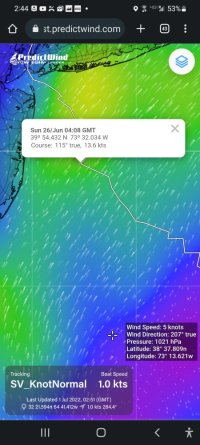David Grimm
E38-200
While at the helm I tend to enjoy racing the boat. I've seen gps speeds of 9 and a max of 11. At the helm all seems wonderful. However when I set the autopilot and go below deck it sounds like a freight train! Often at night I visualize myself waking up floating in a pile of fiberglass splinters because I just beat her too hard.
Also up in the V-Birth is sounds like bombs going off when the water smashes against the hull. I wonder if some boats are insulated to reduce this noise or am I nuts pushing this vessel this fast across the atlantic? What is your speed limit?
Also up in the V-Birth is sounds like bombs going off when the water smashes against the hull. I wonder if some boats are insulated to reduce this noise or am I nuts pushing this vessel this fast across the atlantic? What is your speed limit?

